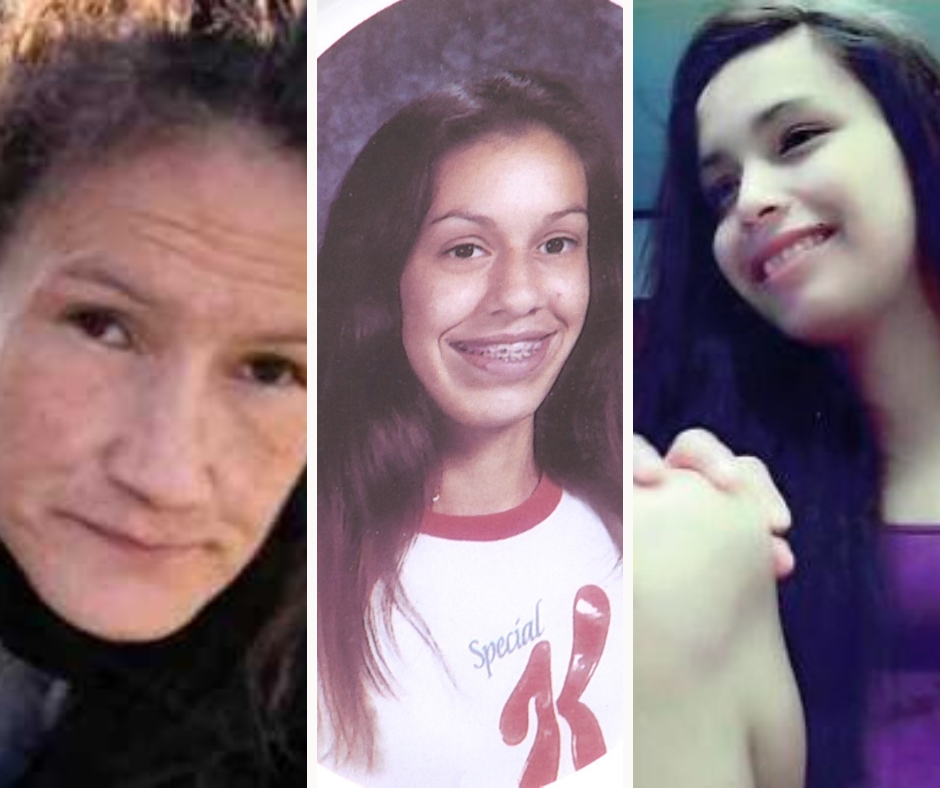‘Her case haunts me’: These horrific murders show North America is not doing enough to help Indigenous women
Twilight Crooks is one of thousands of missing and murdered Indigenous women and girls whose cases remain unsolved


Your support helps us to tell the story
From reproductive rights to climate change to Big Tech, The Independent is on the ground when the story is developing. Whether it's investigating the financials of Elon Musk's pro-Trump PAC or producing our latest documentary, 'The A Word', which shines a light on the American women fighting for reproductive rights, we know how important it is to parse out the facts from the messaging.
At such a critical moment in US history, we need reporters on the ground. Your donation allows us to keep sending journalists to speak to both sides of the story.
The Independent is trusted by Americans across the entire political spectrum. And unlike many other quality news outlets, we choose not to lock Americans out of our reporting and analysis with paywalls. We believe quality journalism should be available to everyone, paid for by those who can afford it.
Your support makes all the difference.On August 28, 2001, Twilight Crooks – a 15-year-old Arapaho girl – left her house in Plano, Kentucky, after receiving a late-night phone call. No one knows where she was going, who she was meeting, or why she left to see them. Two weeks later, Twilight was found dead in a wooded area five miles from home. I had the responsibility of reporting on Twilight’s case for The Independent. Her case has haunted me since I was a student at Western Kentucky University, where I lived with one of her high school classmates. Twilight, however, is but one of thousands of missing and murdered Indigenous women and girls across North America whose cases remain unsolved.
Last month, police in Winnipeg, Manitoba, charged a 35-year-old man with three counts of murder. This is in addition to the charge of murder brought against him in May 2022 for the killing of 24-year-old Rebecca Contois, a member of the O-Chi-Chak-Ko-Sipi First Nation. Two of the other women, Morgan Beatrice Harris and Marcedes Myran, are members of the Long Plain First Nation. The fourth victim has yet to be identified.
Earlier this week, remains found in 2008 were confirmed to be those of Daisy Mae Heath. Aged 29 at the time she was reported missing in 1987, Daisy Mae belonged to the Yakama Nation Tribe in Washington state. KING-TV, the NBC affiliate in Seattle, reports that the state attorney general’s office “found that while Indigenous people make up less than 2 percent of the state’s population, they make up 5 percent of unresolved homicide cases, indicating a racial disparity.”
According to the Crime Report – a website of the Center on Media, Crime, and Justice at the John Jay College of Criminal Justice in New York – the FBI reported 5,203 missing Indigenous girls and women in 2021. They are, the college reports, “disappearing at a rate equal to more than two and a half times their estimated share of the US population.” Amnesty International puts the number of missing and murdered Indigenous women and girls in Canada even higher, with a homicide rate 4.5 percent higher than that of all other Canadian women.
The reality may be even more horrific. “The more we examine records, the more we see that in a lot of cases, this sort of demographic information that’s attached to cases when reports are made are not necessarily maintained uniformly,” Summer Wesley, a former tribal attorney and current social worker who is a member of the Choctaw Nation, told me.
Wesley is a well-regarded advocate for Indigenous people. She has campaigned against race-based mascots and in support of victims of sexual assault in Oklahoma, where she also ran as a Democrat for the state House of Representatives in 2020. Indigenous women and girls, she says, are particularly vulnerable in our society. “We’re at the intersection of gender violence and the structural racial inequality that exists,” she says. “We tend to have higher rates of poverty, of course, because of those structural inequalities. And poverty also is a risk factor for these types of outcomes.”
The truth of that statement bears out in statistics. The national poverty rate for Native Americans is over 25 percent, compared to 8 percent for white Americans. Native children represent one percent of the national child population but two percent of children in care and eight percent of children in homes where a parent is absent, making them more vulnerable to exploitation.
When they are exploited or missing, their cases receive much less attention than missing and murdered white women. Twilight is a perfect example when compared to the murder of Katie Autry, a white college student in the same town who was set on fire in her dorm room in 2003; her case received national attention. So too did the cases of Natalie Holloway in 2005 and, just last year, Gabby Petito. “Missing white woman syndrome,” as the late journalist Gwen Ifill famously dubbed it, means despite being more likely to go missing or be assaulted or murdered, Native women and girls receive less media attention than white women and girls.
Thanks to an antiquated and frankly racist 19th century federal law, they also receive less attention from authorities. The Major Crimes Act of 1885 gives the federal government jurisdiction over the investigation, trial, and imprisonment of major felonies, such as rape and murder, which occur on tribal land.
This has not worked out well for tribal communities. Writing for the New York Times in 2020, Dr. David Heska Wanbli Weiden – a professor of Native American Studies at the Metropolitan State University of Denver – asserted that “[i]n 2018, 39 percent of all referred crimes were declined, and over a quarter of those cases were sexual assaults against children and adults.” This is, ostensibly, for insufficient evidence or a failure to either meet the legal requirements for a crime or to satisfy federal prosecution guidelines. “Whatever the reasons,” Dr. Weiden says, “the reluctance to prosecute certain felony crimes on reservations is well known in Indian Country, and it has led to a virtual open season on native women.”
In the last couple of years, there has been movement at the state and federal levels to address these systemic inequalities. In 2021, Interior Secretary Deb Haaland – a citizen of the Laguna Pueblo tribe and the first Native American to serve as a U.S. Cabinet secretary – created a taskforce within the Bureau of Indian Affairs “to provide leadership and direction for cross-departmental and interagency work involving missing and murdered American Indians and Alaska Natives,” a departmental press release says. Several states have launched task forces or committees to study the issue.
A bill introduced this month in the Washington state legislature would create a cold case unit dedicated to solving crimes against Indigenous people within the state Attorney General’s office. In California, state officials are looking to prevent murders and bring people home safely with the implementation of the Feather Alert. Complimenting the Amber Alert for missing children and the Silver Alert for missing seniors, the Feather Alert will notify Californians on their phones and on digital highway signs whenever an Indigenous person or tribal member is reported missing.
These are important steps forward. However, they do not go far enough or will do enough to protect Indigenous women and girls. The federal government should immediately return sovereignty to the tribes themselves, giving them back the jurisdiction the Major Crimes Act stripped from them more than a century ago. This would allow tribes themselves to investigate and prosecute crimes against their own people rather than relying on the federal government.
This is important, Summer Wesley says, because “when you’re talking about structural inequality,” as we are when talking about the unique vulnerabilities faced by Indigenous women and girls, “how do you fix the problem that’s caused by a system?” Sovereignty, she says – including the sovereignty of tribes to investigate, prosecute, and enforce justice in culturally appropriate ways – remains the best way to help Indigenous women and girls.
“I don’t think you can fully address a problem that is caused by colonization while a colonial occupation continues.”
Join our commenting forum
Join thought-provoking conversations, follow other Independent readers and see their replies
0Comments